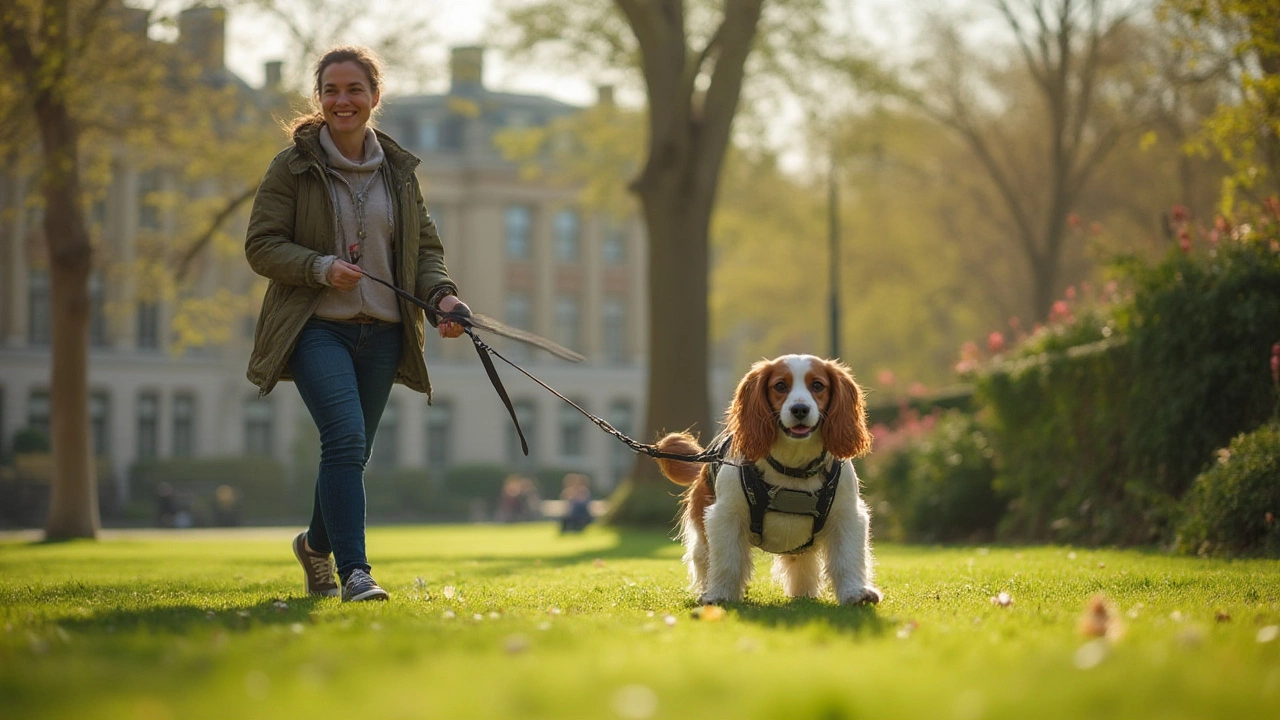Stop Dog Pulling: Easy Ways to Walk Calmly Together
Ever feel like you’re being dragged down the street instead of taking a walk with your dog? Pulling isn’t just annoying – it can strain your wrist, make the walk stressful, and even turn a fun outing into a battle. The good news? You can break the habit without expensive gadgets or fancy classes. Below are down‑to‑earth tips you can try right now.
Why Dogs Pull on the Leash
Most pups pull because they’re excited, curious, or simply don’t know what you want them to do. When the leash is loose, they get a free pass to sprint toward anything that smells interesting. A tight leash, however, feels like a punishment, so they keep pulling to get away. Understanding this push‑pull cycle is the first step to changing it.
Another hidden driver is the lack of a clear cue. If you say “walk” but never show what forward looks like, your dog fills the gap with its own idea – usually a sprint. Consistency and a simple command give them a roadmap to follow.
Training Tools That Actually Work
Before you spend on a high‑tech harness, try a basic front‑clip collar or a gentle leader. These tools give you gentle control without choking your dog, and they teach the pup that the front of the leash is where the action happens. If you do choose a no‑pull harness, pick one with a snug chest strap and a front leash attachment.
Keep treats handy. Small, soft pieces work best because you can reward quickly without breaking stride. A clicker can help you mark the exact moment your dog stops pulling, making the learning curve steeper.
Step‑by‑Step Training Routine
1. Set the stage. Choose a quiet street or a low‑traffic park. Too many distractions will set you back.
2. Get the right gear. Slip on a front‑clip harness, attach a short leash (about 4‑5 feet), and have treats ready.
3. Teach “watch me”. Hold a treat near your face and say “watch me”. When your dog makes eye contact, click and reward. Do this a few times so they learn to look at you first.
4. Start walking. Begin with a normal pace. The moment the leash gets tight, stop dead in your tracks. Say “stop” or “wait”, then wait until the leash loosens.
5. Reward the slack. As soon as the leash goes slack, click, say “good”, and give a treat. Your dog now sees that staying close gets them goodies.
6. Add a cue. Once they get the hang of stopping, introduce a word like “easy” or “heel”. Use it every time you stop for slack, then reward.
7. Gradually increase difficulty. Add mild distractions – a parked car, a passerby – and repeat the same steps. Keep sessions short (5‑10 minutes) but frequent.
Patience is key. Most dogs start to respond within a week of daily practice, but some breeds need a few more sessions.
Keeping the Progress
Consistency across family members matters. If anyone lets the dog pull, the habit re‑forms fast. Agree on the same cue, same gear, and the same reward system.
Mix up your routes to keep the walk interesting, but always start new paths with the same training rhythm. If you notice a slip‑up, go back to step four – stop, wait for slack, reward – and you’ll be back on track.
Finally, celebrate small wins. A few minutes of calm walking is a big step forward. Over time, those minutes will turn into hour‑long strolls where you’re in control, not the other way around.
Ready to ditch the tug and enjoy peaceful walks? Grab a front‑clip harness, some tasty treats, and give these steps a try. Your arms (and your dog) will thank you.
Best Dog Leash and Harness for Pulling: Stop Your Dog from Tugging Walks
Discover the most effective tools to stop a dog from pulling on walks. From no-pull harnesses to clever training tips, get specific advice that works with real dogs.
